Electric Power Systems
fabiano
발전소
0
9492
2007.03.15 19:23
Thermal Power Plant
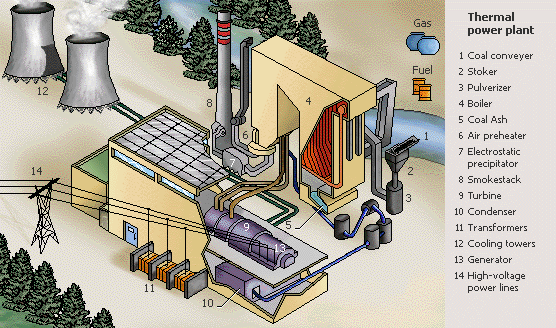
In a thermal power plant, steam is produced and used to spin a turbine that operates a generator. Shown here is a diagram of a conventional thermal power plant, which uses coal, oil, or natural gas as fuel to boil water to produce the steam. The electricity generated at the plant is sent to consumers through high-voltage power lines.
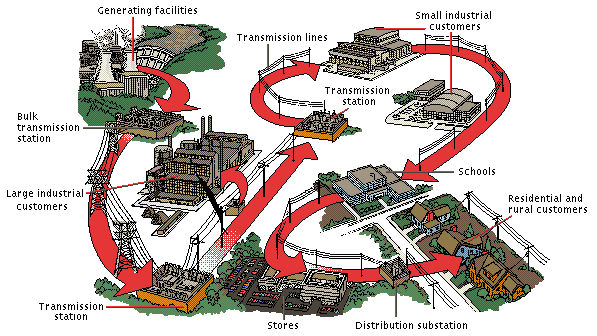
Electricity is generated when a loop of conducting wire rotates in a magnetic field. In a hydroelectric plant, water falling over a dam turns turbines that spin the generators that produce electricity. The electricity flows to a transmission station where a transformer changes a large current and low voltage into a small current and high voltage. Then the electricity flows over high voltage transmission lines to a series of transmission stations where the voltage is stepped down by transformers to levels appropriate for distribution to customers. Primary lines may transmit electricity at voltages as high as 500,000 volts. Secondary lines to homes carry electricity at 240 volts or 120 volts.
The National Power Grid
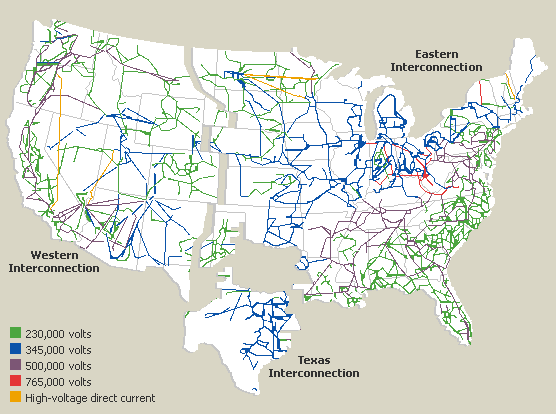
High-voltage electrical transmission lines in the United States are divided into three separate grids that make up what is often called the national power grid. The three grids cover the contiguous 48 states and parts of Canada and Mexico and are known as the Western Interconnection, the Eastern Interconnection, and the Electric Reliability Council of Texas (ERCOT) Interconnection. The three grids operate independently for the most part but are connected in a few places by direct-current lines. All United States power utilities, except those in the states of Alaska and Hawaii, are connected to other power utilities through the national power grid. Dispatch centers maintain and control the flow of electricity over the grid, supplying electricity to meet the demand.
Electric Power Control Panel
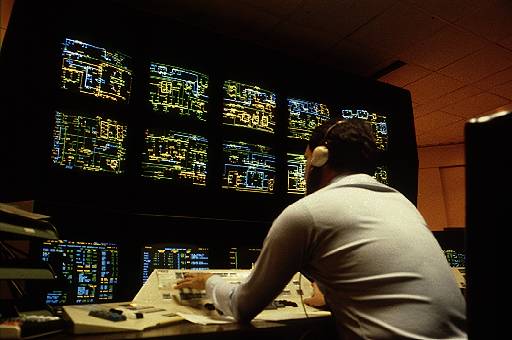
An operator monitors the master control panel for an electric company in Philadelphia. The computer screens show the power line connections and routes. From such a central location, an operator can quickly identify blackouts, or large system power failures, and other power interruptions.
Northeast Blackout
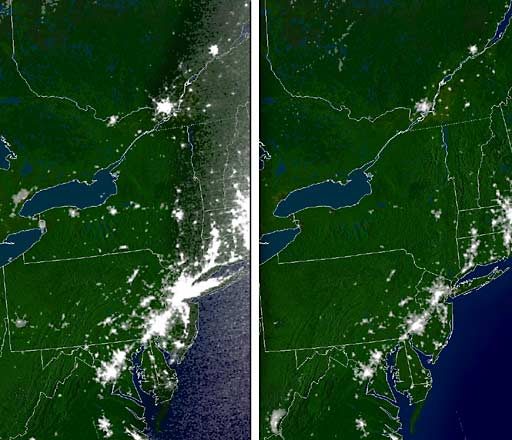
Before-and-after satellite images of the Northeastern United States and parts of the Canadian provinces of Ontario and Quebec capture the worst power blackout in the history of Canada and the United States. The blackout occurred in August 2003 and affected an area covering 50 million people.
World Plugs and Outlets

Plugs and outlets enable people to use electricity in their homes, offices, and schools, and any place else where electric power is needed. Various types of plugs and outlets are used throughout the world. Some of the more popular types are shown here. Type A, also called the American type, is used in North and South America and in Japan and other parts of Asia. Type B, also called the British type, is used in the British Isles and in parts of Asia and Africa. Type C and Type SE are used in parts of Europe and Asia, as well as in limited areas in Central and South America. Type O, also called the Oceania type, is used in Australia and the countries of the South Pacific.
Ways to Conserve Electricity
| Uses of Electricity | How to Conserve Electricity |





